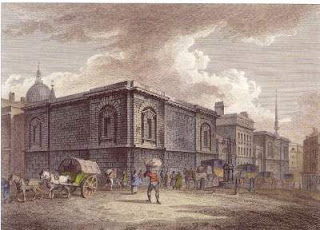I’m looking out the window at a beautiful, sunny, Newcastle winter day, which makes a change from the spectacularly foul weather we’ve been having here lately. Apparently we’ve had the most rain in July in 21 years, or something. Australians are great ones for comparisons - it’s always the hottest day since 1962, or the worst floods since 1939, or the biggest cyclone since the last biggest one. As bad as New Zealanders when it comes to the weather.
I’ve been enjoying the rain and wind, though. Reminds me of home. Except for last Thursday, when the Surfer and I drove down to Sydney for the weekend. The weather was atrocious. The wind was almost gale force, the rain was sideways, you could barely see the road and we lost a hub cap and that bit of trim that goes along the side of the car.
We went down because I had a meeting with my publisher, HarperCollins Australia. Work on the new book is trotting along nicely, but the Surfer didn’t get to surf because the waves were a murderous four metres at all the beaches. Coming across the harbour from Manly to Circular Quay on the ferry was great fun – the swell was HUGE.
 |
| Nobby's Beach, Newcastle, a few weeks ago. |
 |
| Sydney, view of South Head from North Head, last weekend |
And now I’m back at my desk polishing the manuscript – ‘polishing’ being a euphemism for fixing all the bad bits – so it can be ripped apart again at the next meeting. It’s a long process, editing, but always worth it.
The Research
I admit there is a hint of swearing in this new series, so people offended by foul language will just have to read with their hands over their ears. But it’s about convicts and various characters from the underworld in the 1830s, and therefore hard to avoid. So I’ll just dive in here.
Interestingly, the word f***ing, and I’m referring to the ‘ing’ part, didn’t come into use until c.1840, although the obscene f*** by itself first appeared in writing in 1503. The etymology of the actual word isn’t clear, but it doesn’t come from ‘fornicate under command of the King’ as is popularly thought. I’ve occasionally used f***ing anyway, despite the anachronism, because it has the 21st century impact I’m looking for. Bloody, as in ‘you bloody bastard’, just doesn’t cut it, even though back then bloody was considered a foul word and was very popular with the London underworld. Or anyone who felt like swearing, really.
Shit has been in constant use since the 14th century, so not much has changed there. Bugger comes from the French bougre, which came from the Latin Bulgaris. Something to do with a sect of allegedly homosexual Albigensian heretics, apparently. It originally meant sodomy, as defined by England’s Buggery Act of 1533, but by the 19th century bugger had become a general and versatile swear word.
C***, which has Greek origins, appears to have started out as a descriptive word rather than obscene. There was a Gropec***elane in the brothel area of Southwark c. 1230, and Lanfranc of Milan used it when writing about surgery in 1400. But by the end of the 17th century it had become legally obscene and you could be prosecuted for printing it. That didn’t stop people saying it, though.
Which all goes to show that there’s nothing new under the sun. Note that most of this information is not the result of my own painstaking research – I’ve pinched a lot of it from a fascinating tome called Slang Down the Ages: the historical development of slang by Jonathon Green (Kyle Cathie Ltd, 2003). Very handy book. In future posts I’ll look at insults from the 18th and 19th centuries – much more colourful than swearing – and the fascinating subject of cant, the language of London’s criminals.




